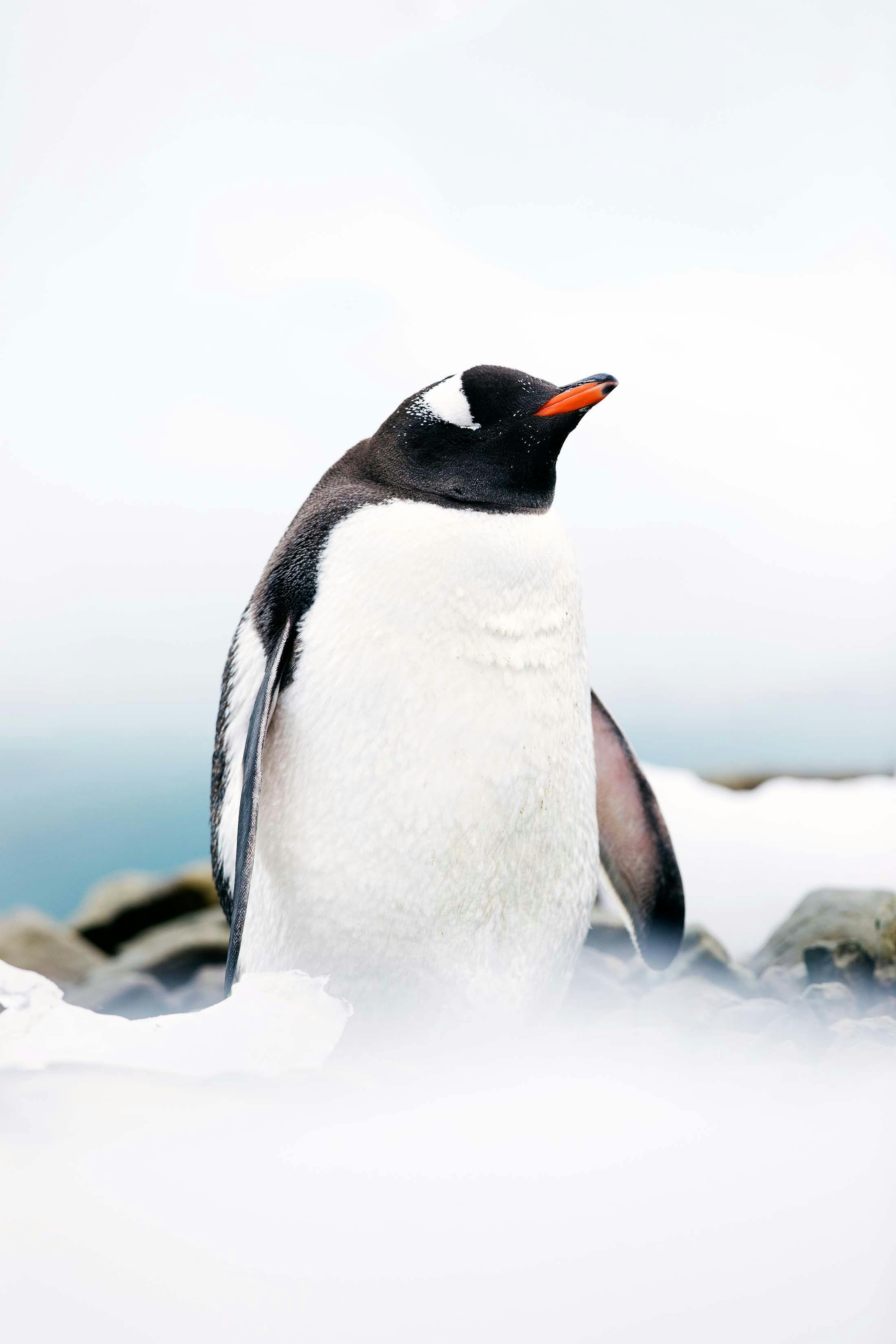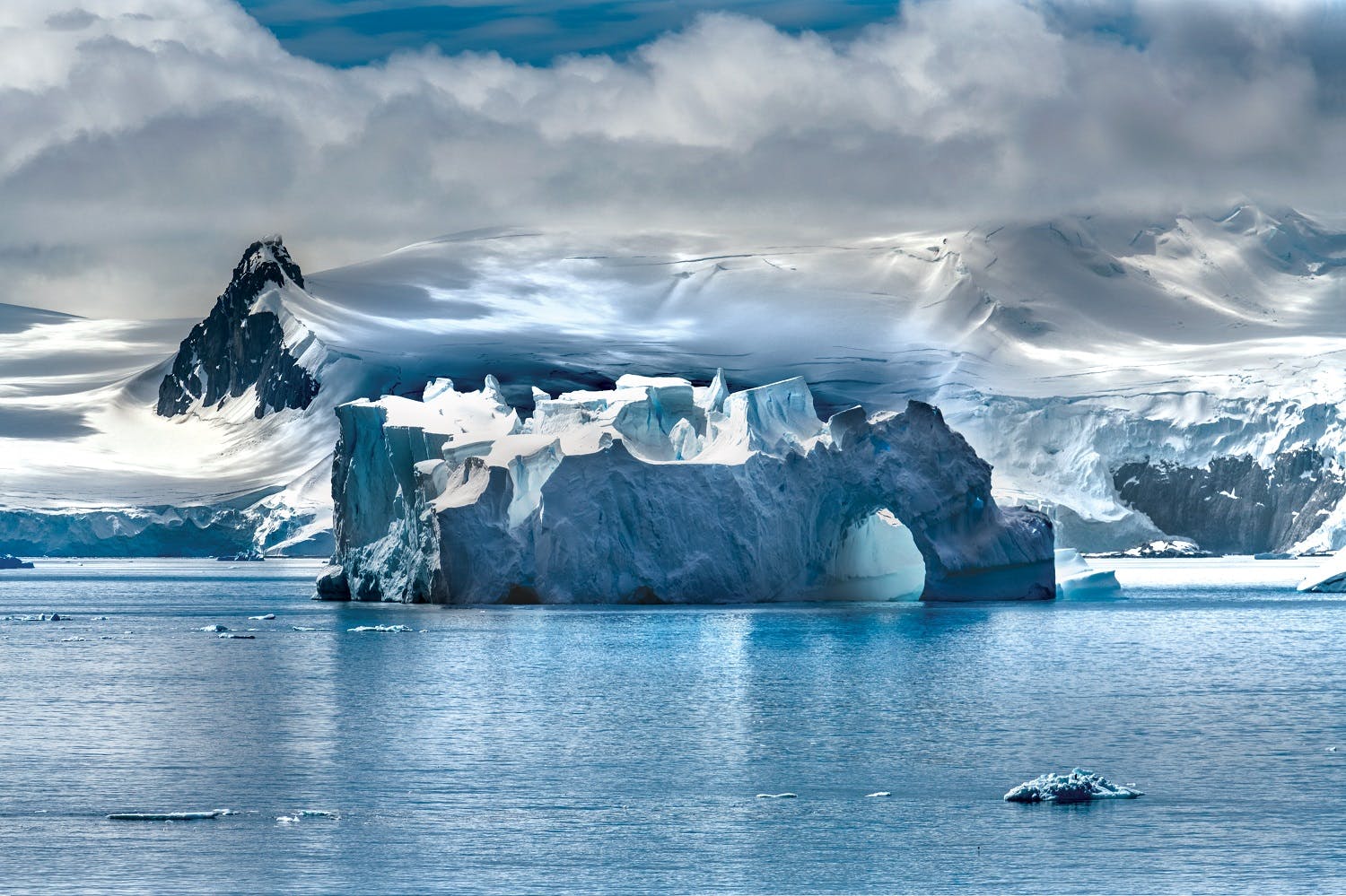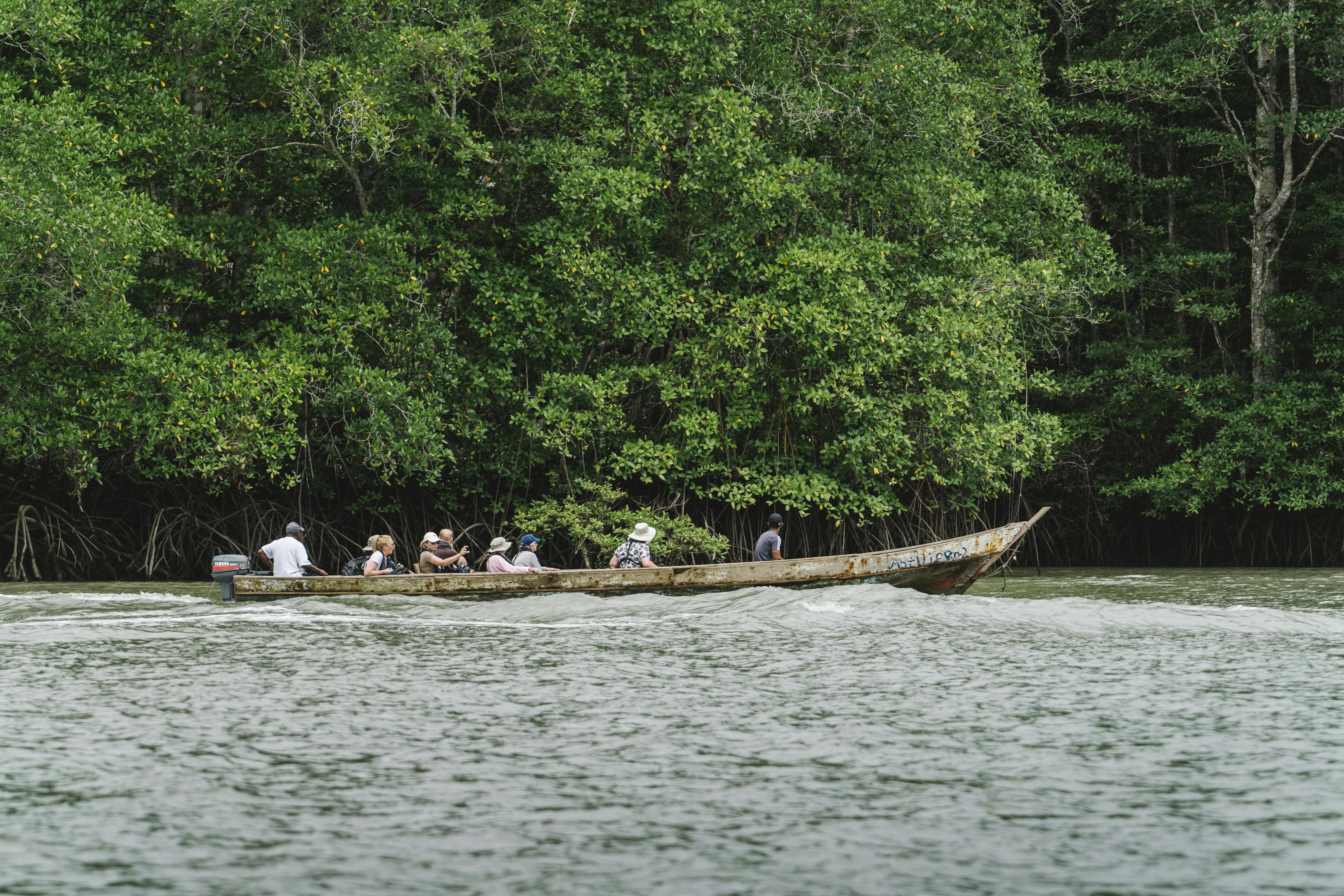Silversea Sits Down With Antarctica Adventurer Felicity Aston
Polar explorer Felicity Aston seems to make history wherever she goes. She was the first woman to ski alone across Antarctica and now, the first person to christen a ship — Silversea’s Silver Endeavour — in the ice-filled Lemaire Channel of Antarctica.
“Being among the first to sail aboard Silver Endeavour — naming the ship in the company of such esteemed guests and assuming the role of Godmother — makes me incredibly proud,” Aston said at the Nov. 19 ceremony, during which an ice sculpture of a magnum bottle broke against the hull.
“The ship shares her name with the ship on which Captain Cook set forth for the ends of the Earth, but exploration has, of course, evolved in the centuries since Cook departed, ” Aston said of the Silver Endeavour, which carries 200 passengers and will sail to the North and South Poles.
“Today, exploration is not only about geographical discovery; it is also about finding new ideas, new inspiration, and new perspectives. Silver Endeavourwill allow more people to become explorers and return home with new outlooks. She will be a source of self-enrichment, as people connect with the planet and each other. Fair winds and following seas to all those who sail on her.”
Unlike early explorers and adventurers to the South Pole, who suffered hardships, guests today will enjoy luxury on Silver Endeavour as well as Silver Wind and Silver Cloud.
Aston has shared her passion for the polar regions and women’s empowerment by leading all-female expeditions to the coldest places on the planet. Her accomplishments have earned her honors including Member of the Most Excellent Order of the British Empire and the Queen’s Polar Medal. When she’s not on an expedition, Aston splits her time between her home country of England and Iceland, where she and her family use traditional methods to collect eider duck feathers.
Aston shared her thoughts on personal resilience, climate adaptation and the value of time alone. Here is an excerpt from that conversation:
How did you become a polar explorer?
By the time I made that journey alone across Antarctica, I had been putting together, leading and taking part in expeditions for well over a decade. It certainly was a gradual progression. I paid my apprenticeship in the old-fashioned way: I started small, fought for my opportunities and grabbed hold of them enthusiastically whenever they came my way.
That adage about making your own luck … when you look back on your life, everything seems like an orderly course to get to where I am now. But, of course, when you’re traveling through your late teens, your 20s and early 30s, you don’t know that it’s all going to work out in a positive way.
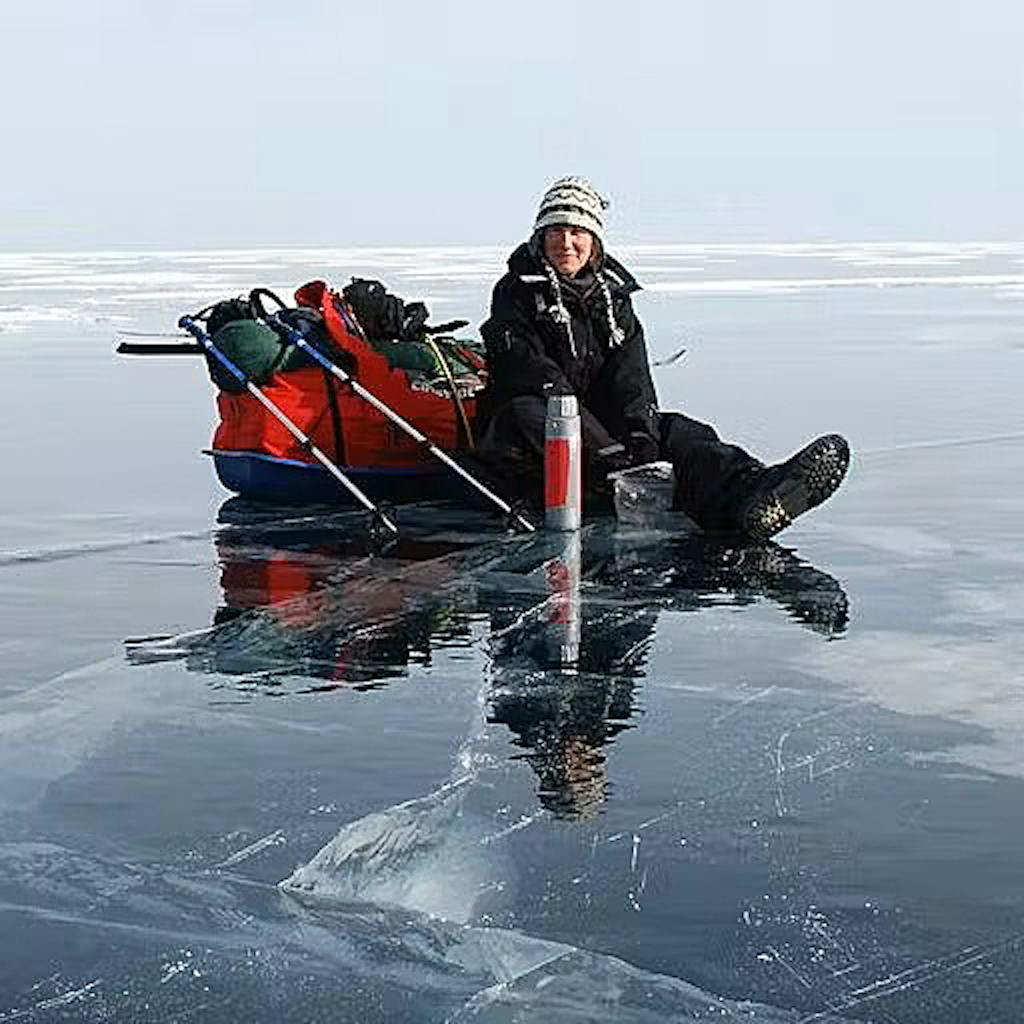
How did you get started?
My first job, straight out of university [where she studied meteorology], was with the British Antarctic Survey, which is the UK’s main government-funded program in Antarctica. I was posted to a research station for what was then the standard posting, which was 39 months. I went down there in December 2000 and I didn’t leave Antarctica again — not for a break, not for a holiday or anything — until April 2003.
The result was Antarctica wasn’t just somewhere that I got to visit. It was my temporary home. It was somewhere that I got to be on days when there was nowhere else in the world I would rather have been, but also on days when I would rather have been anywhere else in the world than down there in the dark with a small team of 20 people that I didn’t get a hand in choosing. Seeing its ugly corners and its ugly faces, as well as its beautiful picture-postcard ones, is part of the reason it embedded itself so deeply under my skin.
I found that when I did finally leave Antarctica, my first thought was getting back out into the polar regions.
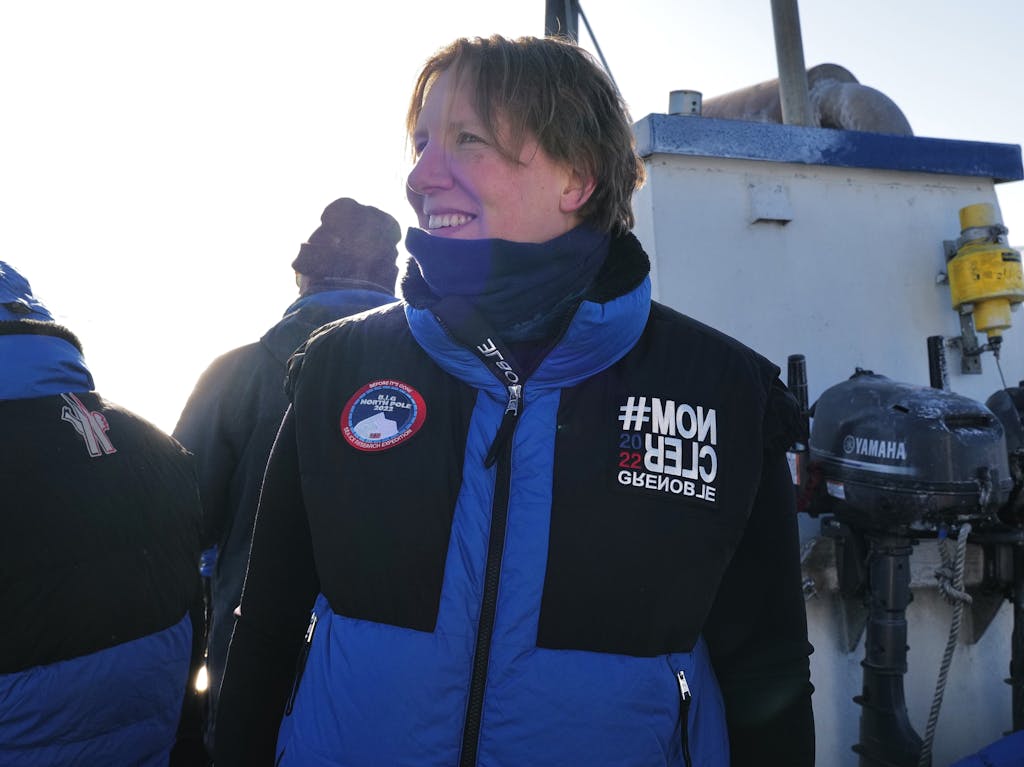
You are the only woman to ski alone across Antarctica. Why did you make that journey?
At the time I decided to go alone on that journey, I’d been doing these polar journeys in various guises for about 10 years. It was curiosity to know: Could I do it? And what would it feel like to be out in this environment that I already knew was very empty, to be there on my own?
That journey is often referred to in terms of conquering, or first, or records, or somehow overcoming the environment. It was never about that for me. It was more like a pilgrimage. To see this entire cross-section of Antarctica like that remains the biggest privilege of my life.
Why do so many of the expeditions you lead have all-female teams?
On a lot of the commercial trips where I’ve been employed to be a guide or to lead, I was one of very few, if not the only, woman on that team. When I had the opportunity to put together teams, I was most interested in putting together all-female teams because it was a mark of difference to everything else that I was doing.
As time has gone on, I’ve noted that people are still interested and surprised by the fact that my team are all women. And I think while people are still interested and surprised, there is still a need to do it.
I look forward to the day when nobody bats an eyelid that my team is all women or men or a mixture of the two. That’s what we’re striving for, isn’t it? A place in the future when it really doesn’t matter what your gender is, or any of the other kind of prejudices that are out there. What matters are the individuals and what you’re doing.

The trips you’ve made require resilience. How do you build that? Why do you think some people are more resilient than others?
Resilience doesn’t come out of a bottle or out of a book. It’s something that has to be trained and built and developed and really thought about before you need it. Before you need something, you can’t really feel the urgency and the priority that you should place on it. By the time you need it, it’s too late. Luckily now, I think we all see the wisdom in that.
Polar explorers are very familiar with this idea that you should expect nothing to go the way it should. If the mindset is that the difficulties, the adversities, are what you’re expecting, there’s opportunity in that adversity. You’re already thinking that we know how to do this because we’ve been training for it. It puts you in a more control-focused frame of mind, so you don’t feel overwhelmed and vulnerable.
And who says that you’re resilient or not? I think a lot of people tell themselves that they’re not resilient or that they failed or that they haven’t done it right. Yet there is no right or wrong way to get through something. If you’re still standing at the end, then you are resilient and you’ve done it bloody well. It doesn’t matter how messy that process was.
We’re very bad as human beings generally at giving ourselves the credit that we deserve. Everybody could benefit from more often just stopping and taking account of how far they’ve come. If you give yourself that recognition that you’re still going and you’re still standing, that’s a much more powerful place from which to face the next adversity that will inevitably be around the corner.
Who inspires you?
What springs first to mind are the people that haven’t necessarily inspired me. People would assume that I would be inspired by people like [Robert Falcon] Scott and [Ernest] Shackleton and [Roald] Amundsen. I find it very difficult to be inspired by men at the opposite end of the 20th century to when I was born because the whole mental attitude was so different. I don’t think they could conceive of a woman wanting to do these things, never mind actually going out and doing them. Also, lots of them died in the process, and I had no intention of following that outcome.
The people who have inspired me are the people I’ve traveled with in many cases. It’s not just people that have been in leadership roles, but people who have been in team roles too. When I put together international teams of women from very different cultures to my own, and very different values to my own, I’ve found that really inspiring.
And women who haven’t necessarily done anything like a polar expedition before they start on that process — I’ve watched them go from never having done anything like this before to undertaking some of the toughest journeys on the planet, and then go on to inspire so many more people to do so.
I’m still receiving emails 10 years or more after an expedition from people who have said, That story gave me the courage to start my own business, or to learn a new language or to do my first 5K. I find that so humbling and so wonderful and rewarding, to think that something you’ve done…had a positive practical effect on another human being that I’ll never meet. That’s what you have to hope for in life generally, that something that you have done has a positive effect that leaves a positive legacy that you may not even know about.
For you, what is the hardest thing you’ve done?
Far harder than the expedition itself is getting the expedition off the ground in the first place. It’s not just about finding the astronomical sums of money that you need in order to put them together, but it’s also finding the right team and then making sure that team is functional and working. Dealing with people is the hardest thing in the world because we are contrary and there’s no guidebook to dealing with human beings.

Next spring, you are planning an Arctic expedition to measure sea ice. What do you expect to find?
It is no longer necessary to travel to the ends of the Earth to see climate change for yourself. No matter where you spend your time on this planet, right now you will be experiencing massive changes in the environment around you. You have experienced … unseasonal flooding and more dramatic and extreme weather events. You won’t be able to get hold of certain products. You’ll be needing vaccines at different times of the year.
My own area of expertise is polar exploration, so let’s look through the lens of polar exploration. The first person to undisputedly cross the surface of the Arctic ice to get to the North Pole was Sir Wally Herbert. He did it in 1969, just two months before Neil Armstrong took the leap onto the surface of the moon.
The last time someone was able to repeat that journey, going from land to the North Pole, happened in 2014. And it’s broadly accepted that that journey will never be possible again. Today it’s only possible to make a partial journey across the frozen surface of the Arctic Ocean to get to the North Pole.
It’s not just a matter of there being less ice than there’s ever been before. It’s that what ice is there is thinner, newer and less stable than it’s ever been before. You know this is not a situation that’s going to get better. This situation is going to get worse.
In my opinion, we need to be focusing on adaption to what we know is coming. We’re going to have huge climate refugee problems. We’re going to have huge food security problems. Health, medicine — we know the vision of the future that we need to prepare for, and yet we seem to be stuck in this rut of arguing about what has happened in the past rather than focusing on what we need to focus on the future.
What would it take to make that happen?
I wish that we could take all the big change makers in the world, all the people in positions of influence, and take them to the areas of world this will affect — to Antarctica for example. They would return with such an altered perspective, not just caring about Antarctica but with an altered perspective on what is important to us on this planet as a species.
The reason I think Antarctica specifically has that power is because this is a continent that’s so ancient and so vast and so empty of human history. It brings you face to face with the scale and the forces of nature on our own planet.
Antarctica reminds me of how brilliant and remarkable we are as a species. That gives me hope for… all the challenges we’re facing in the future. We have the ability to overcome anything. We just need the will to do it. And that’s at the moment, I think, is what it’s missing. The will.
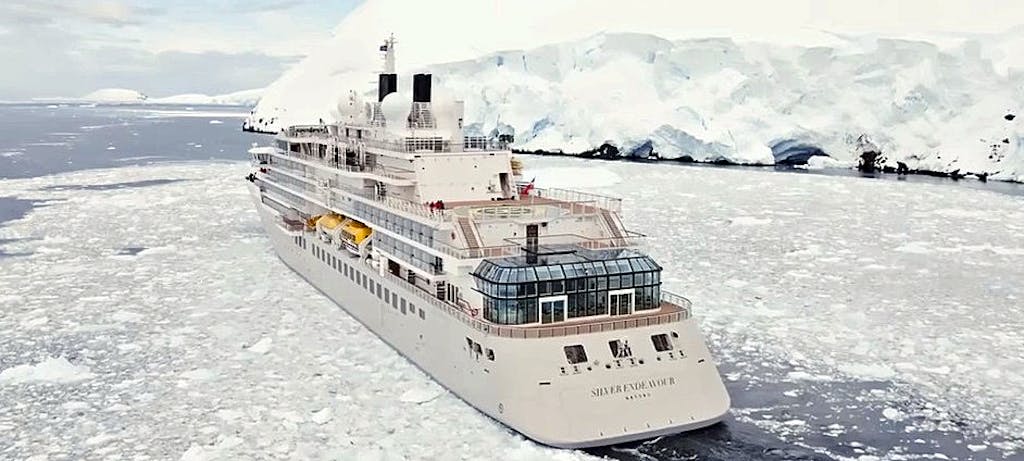
What does it mean to you to be named godmother of the new Silver Endeavor?
I was thoroughly thrilled.
It’s a wonderful tradition, firstly because it puts women front and center. Common perception seems to be that women are new arrivals as explorers, but when you look through history, women have always been explorers, sailors, admirals, generals, political leaders, figureheads and queens — amazing queens.
To have a ship that is an explorer in the female gender is a constant little reminder that women have always been exploring these horizons as much as men. It’s just that we don’t hear about those stories. But I hope in the future we will hear more of these wonderful stories.
I’m really proud to be associated with a ship that’s going to be taking people who might not necessarily otherwise get to experience a place like Antarctica. Silversea is going to enable so many more people to explore for themselves, to experience places like Antarctica and the Arctic. Then they’re going to bring that experience back and hopefully it will give them that perspective shift — that they will perhaps make different decisions in their work life, in their family life, in society and in the communities in which they live.
Feeling inspired by Felicity Aston to explore polar regions yourself? Check out these cruises to Antarctica, the Arctic & Greenland, and learn more about Silver Endeavour.





